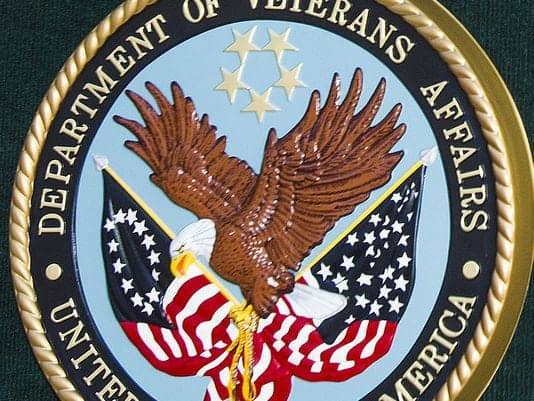
Retired Air Force Tech. Sgt. AnnaBelle Bryan damaged a knee, injured a foot and busted her shoulder twice during her 21 years of service.
She hoped subsequent surgeries would allow her to qualify for disability benefits with the Veterans Benefits Administration. Bryan began the notoriously slow claims process three months early in hopes of receiving her disability status upon retirement.
It did not work out as she hoped.
One year after Bryan’s 2012 retirement, as she and her husband prepared to move from Montgomery, Ala., to Salt Lake City, her disability status still had not been determined. Her appointment with the Montgomery VA had been moved and then rescheduled without her knowledge. The copies of her health records she had sent the VA were nowhere to be found.
“If you do not have medical records, you can’t prove that you had an injury or that you were seen for any issue,” Bryan said. “Without that, you’re dead in the water.”
The record-sharing relationship between the Department of Veterans Affairs and the Department of Defense should allow them to share patient health records across agencies and clinics, yet records such as Bryan’s are still falling through the cracks.
A July audit by the Defense Department’s inspector general found that the Defense Department failed to make proper records transfers to the VA. In the Army, 77 percent of records transferred in 2013 were not timely and 28 percent were not complete, the audit said.
“DoD’s failure to consistently make timely and complete (service treatment records) available to the VA likely contributed to delays in processing veterans’ benefit claims,” the inspector general’s report said.
As the scandal unfolded this summer over veterans’ wait times for VA health care, the agency’s dysfunctional recordkeeping and questionable technology emerged as one of the culprits identified by experts.
The inability of the agencies to share electronic health records efficiently is one of several technology issues contributing to health-care and claims-processing delays within the VA.
The Government Accountability Office noted earlier this year in a critical report that the problem is not new and has been repeatedly mishandled by both the VA and the Defense Department.
In addition to getting its records system to talk with the system at the Defense Department, the VA needs an outside data-management tool to improve the compatibility of separate systems within the agency, said Karen Watts, a Silicon Valley entrepreneur and former Mesa resident. Watts’ process-software company Apparency has developed an online program to help veterans fill out benefits applications.
A key part of the problem is the VA’s reliance on old technology. A report released last week by the VA’s Office of Inspector General criticized the agency’s out-of-date scheduling system. The system has come under fire repeatedly since The Arizona Republic disclosed in April that veterans were dying while awaiting appointments for care.
The inspector general’s report noted a June White House review that called the scheduling technology at VA medical centers “cumbersome and outdated.”
The VA has scrutinized its antiquated scheduling system but has failed to make improvements despite trying since 2000, the report said. A March 2009 memo from the undersecretary for health to the assistant secretary for information and technology said the VA’s replacement scheduling application project had failed to improve the agency’s scheduling capability. After five years and $75 million, “the RSA failed to deliver a useable product because of ineffective planning and oversight,” the memo said.
In a 2009 audit, the inspector general wrote, “Ultimately, VA runs the risk that its IT capital investments will not meet cost, schedule, and performance goals, impacting VA’s ability to timely and adequately provide veteran health services and benefits.”
In response to the report released last week, the VA said it planned to update its scheduling system with “commercial off-the-shelf” software.
“It’s going to take some chipping away, but there’s no excuse to not start plugging some of the holes,” Watts said. “There’s a huge backlog.”
While the management of medical records is a problem throughout the health-care industry, information-security concerns and strained relations between the VA and the private sector have made modernizing technology within the VA an even greater challenge.
“The VA is not at the level they need to be to handle patients, to handle the data,” Watts said. “You have to be able to squeeze every ounce of productivity you can out of your doctor. If you have inefficiencies in processes and inefficiencies in technology, you’re not going to have 100 percent utilization, which means patients aren’t going to get the care they need.”
A split over systems
The Office of the National Coordinator for Health Information Technology has worked closely with the VA, the Defense Department and the private sector to increase interoperability the ability of health-care providers to share patient information in a way that makes iteasy to use.
Nonetheless, both agencies have come under fire for repeatedly delaying progress. A February GAO report noted that the agencies have already abandoned a 2011 agreement to “develop a single, common electronic health record system … to replace their existing health record systems.”
The Defense Department plans to buy a new system, while the VA intends to modernize its own in-house design.
The GAO was skeptical, noting that the agencies “have not substantiated their claims that the current approach will be less expensive and more timely than the single-system approach.”
Dr. Doug Fridsma, the ONC’s chief science officer, said the agencies recognize that “being able to exchange information not only between the VA and the DoD, but also out in the community, is very important for success in being able to take care of their patients.”
The ONC has coordinated efforts to improve interoperability by setting technical standards for exchanging records.
But modernizing the system takes time.
“Interoperability isn’t something where you can flip a switch and you either have it or you don’t,” Fridsma said. “There’s this tension between wanting to see the benefit as quickly as you can and giving the vendors and providers enough time to add that into their system.”
Watts said the entire health-care industry is “way, way, way willfully behind the rest of the world. This is where I’m going to cut the VA some slack. They’re not alone.”
Ahead of private sector
Dr. Theresa Cullen, director of health informatics at the Veterans Health Administration, said 60 to 70 percent of VHA patients receive care outside the VA, requiring the VA to take the lead on solving interoperability problems within the industry.
“The DoD and the VA are ahead of the private sector,” Cullen said.
The Veterans Benefits Administration has developed an electronic health-records system that processes 90 percent of electronic health records using shared opensource code and outside vendors, VBA officials said.
Still, the VA is not making the most of tools available in the industry, Watts said.
“It’s a mentality thing,” Watts said. “The government has been more closed, and they need to be a bit more open. They’ve started to be more open with their health care, and now they need to do that with their technology.”
Updating the agency’s antiquated technology will be costly, Watts said. Turning to the private sector may be the most cost-effective solution, she added.
Finally, an appointment
Bryan, the former Air Force tech sergeant who retired in 2012,finally got her appointment at the Salt Lake City VA clinic. Her missing health records delayed it by three weeks. Her file was so disorganized that the clinic asked VA headquarters in Washington, D.C., to help sort them out.
Records sent from the Defense Department to the Veterans Benefits Administration can take years to appear in the system and in some cases get lost entirely, said Bryan, who keeps copies of her medical history at home, next to a 1-inch stack of her husband Craig’s medical records.
Craig, a former Air Force psychologist, left the service in 2009.
“In some cases, the records you have on you are the only ones out there,” Bryan said.
Slow-moving records
The inspector general measured how long it took to transfer service treatment records (STRs) from the Department of Defense to the Department of Veterans Affairs in 2013. The standard for timely transfer is 45 days. Below are the results, by service branch.
Army: Of 96,224 STRs transferred, 77 percent were not timely and 28 percent were incomplete.
Air Force: Of 45,912 STRs transferred, 35 percent were not timely and 11 percent were incomplete.
Navy: Of 1,479 STRs transferred, 46 percent were not timely. The Navy had insufficient data to determine if the STRs were complete.





